Related Research Articles
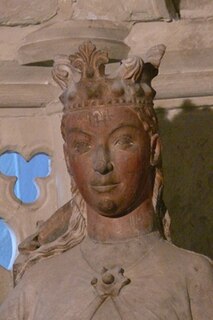
Edith of England, also spelt Eadgyth or Ædgyth, a member of the House of Wessex, was a German queen from 936, by her marriage to King Otto I.

Matilda of Ringelheim, also known as Saint Matilda, was a Saxon noblewoman. Due to her marriage to Henry I in 909, she became the first Ottonian queen. Her eldest son, Otto I, restored the Holy Roman Empire in 962. Matilda founded several spiritual institutions and women's convents. She was considered to be extremely pious, righteous and charitable. Matilda's two hagiographical biographies and The Deeds of the Saxons serve as authoritative sources about her life and work.

The Ottonian dynasty was a Saxon dynasty of German monarchs (919–1024), named after three of its kings and Holy Roman Emperors named Otto, especially its first Emperor Otto I. It is also known as the Saxon dynasty after the family's origin in the German stem duchy of Saxony. The family itself is also sometimes known as the Liudolfings, after its earliest known member Count Liudolf and one of its most common given names. The Ottonian rulers were successors of the Germanic king Conrad I, who was the only Germanic king to rule in East Francia after the Carolingian dynasty and before this dynasty.
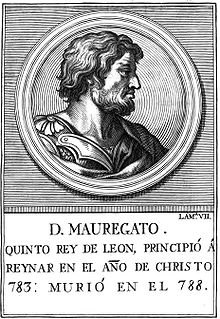
Year 783 (DCCLXXXIII) was a common year starting on Wednesday of the Julian calendar. The denomination 783 for this year has been used since the early medieval period, when the Anno Domini calendar era became the prevalent method in Europe for naming years.
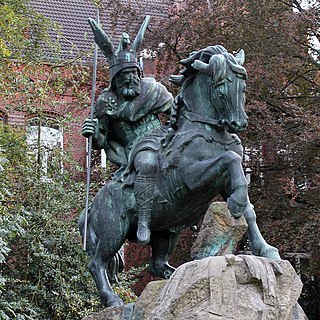
Widukind, also known as Wittekind, was a leader of the Saxons and the chief opponent of the Frankish king Charlemagne during the Saxon Wars from 777 to 785. Charlemagne ultimately prevailed, organized Saxony as a Frankish province, massacred thousands of Saxon nobles, and ordered conversions of the pagan Saxons to Christianity. In later times, Widukind became a symbol of Saxon independence and a figure of legend.
Widukind of Corvey was a medieval Saxon chronicler. His three-volume Res gestae Saxonicae sive annalium libri tres is an important chronicle of 10th-century Germany during the rule of the Ottonian dynasty.

The Duchy of Saxony was originally the area settled by the Saxons in the late Early Middle Ages, when they were subdued by Charlemagne during the Saxon Wars from 772 and incorporated into the Carolingian Empire (Francia) by 804. Upon the 843 Treaty of Verdun, Saxony was one of the five German stem duchies of East Francia; Duke Henry the Fowler was elected German king in 919.
Otto of Nordheim was Duke of Bavaria from 1061 until 1070. He was one of the leaders of the Saxon Rebellion in 1073-75 and the Great Saxon Revolt of 1077-88 against King Henry IV of Germany.
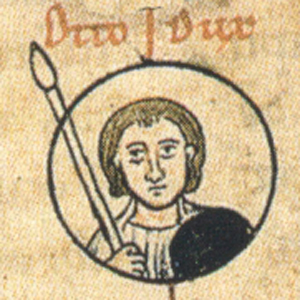
Otto, called the Illustrious by later authors, a member of the Ottonian dynasty, was Duke of Saxony from 880 to his death.

Bruno, also called Brun or Braun, a member of the Ottonian dynasty, was Duke of Saxony from 866 until his death. He is rated as an ancestor of the Brunonids, a cadet branch of the Ottonians, though an affiliation is uncertain. Bruno was killed fighting against Norse warriors in the Battle of Luneburg Heath and is venerated as one of the Ebsdorf Martyrs.

Liudolf was a Carolingian office bearer and count in the Duchy of Saxony from about 844. The ruling Liudolfing house, also known as the Ottonian dynasty, is named after him; he is its oldest verified member.

Ringelheim with 1,994 inhabitants is the sixth biggest quarter of Salzgitter in Lower Saxony, Germany, located on the Innerste River at the very far south-western end of the urban area. The Salzgitter-Ringelheim train station is the most important station of the city, as the Brunswick Southern Railway and the line from Hildesheim to Goslar cross here.

Affligem Abbey is a Benedictine monastery in the municipality of Affligem, Flemish Brabant, Belgium, 19 kilometres to the north-west of Brussels. Dedicated in 1086, it was the most important monastery in the Duchy of Brabant and therefore often called Primaria Brabantiae.
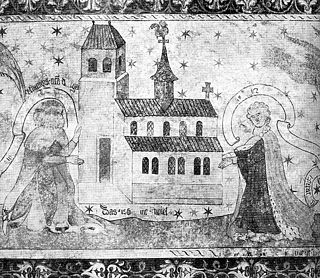
Burchard III, a member of the Hunfriding dynasty, was the count of Thurgau and Zürichgau, perhaps of Rhaetia, and then Duke of Swabia from 954 to his death.

Liutgard of Saxony was Queen of East Francia from 876 until 882 by her marriage with King Louis the Younger.

Gertrude Anne of Hohenberg was German queen from 1273 until her death, by her marriage with King Rudolf I of Germany. As queen consort, she became progenitor of the Austrian House of Habsburg.
Wichmann I the Elder was a member of the Saxon House of Billung. He was a brother of Amelung, Bishop of Verden, and Herman, Duke of Saxony.

Herford Abbey was the oldest women's religious house in the Duchy of Saxony. It was founded as a house of secular canonesses in 789, initially in Müdehorst by a nobleman called Waltger, who moved it in about 800 onto the lands of his estate Herivurth which stood at the crossing of a number of important roads and fords over the Aa and the Werre. The present city of Herford grew up on this site around the abbey.
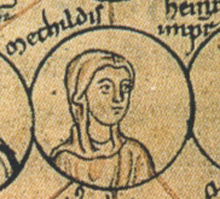
Matilda, Countess Palatine of Lotharingia, was a member of the Ottonian dynasty, the third daughter of Emperor Otto II and Empress Theophanu.
Dietrich, also known as Dietrich of Ringelheim, was a Saxon count of the Middle Ages.
References
- ↑ Herbermann, Charles, ed. (1913). . Catholic Encyclopedia . New York: Robert Appleton Company.